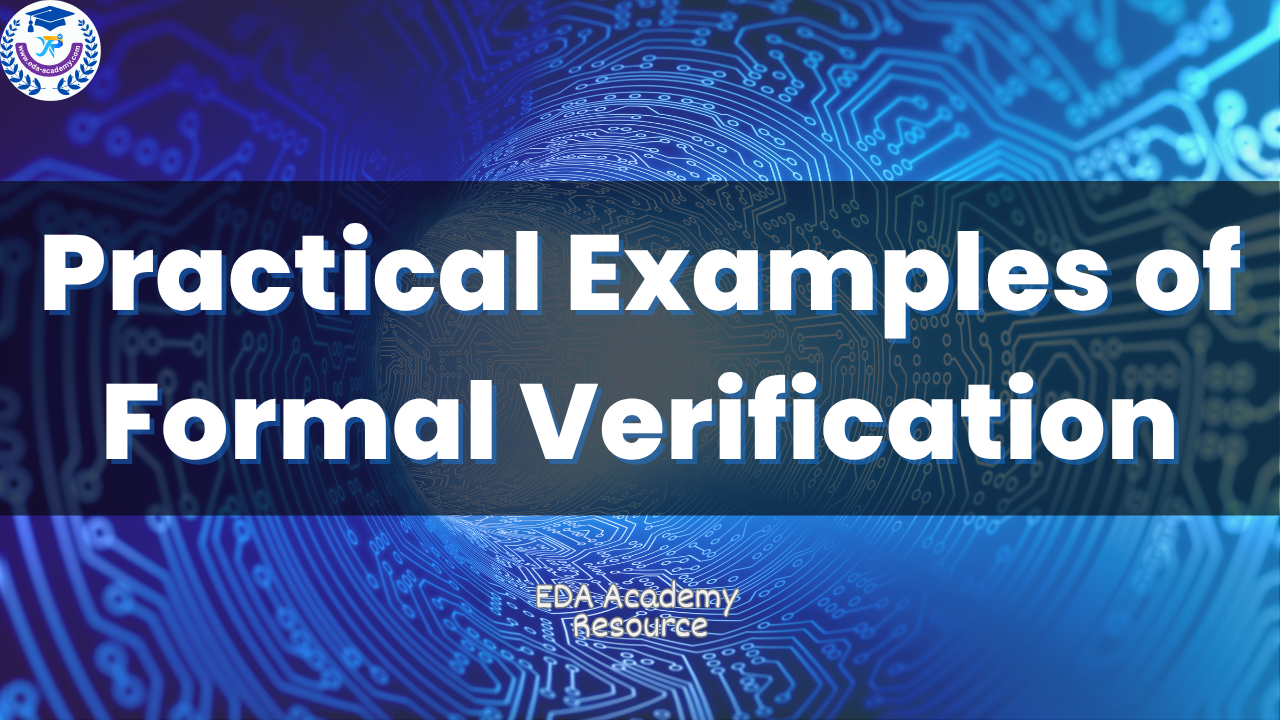Resource:
Practical Examples of Formal Verification (English)
This content focuses on practical modeling strategies for formal verification using auxiliary code in combination with assertions. Key examples include overlapping handshakes, REQ-GNT protocol compliance, signal activity monitoring, temporal sequencing, SOP/EOP matching, event timing constraints, and multi-clock signal synchronization. Auxiliary modules are used to track state history, abstract protocol behavior, monitor signal transitions, and manage cross-domain events. These techniques form the backbone of scalable and interpretable formal models that enable assertion reuse, improve solver performance, and enhance observability in complex RTL designs.
Purchase
Our course syllabus is regularly updated to reflect the latest advancements and best practices in the field. For individually purchased courses or resources with lifetime access, students can always access the content and receive updates for free. For members, all member-free courses and resources — including future updates — are accessible during the active subscription period. This ensures that both lifetime purchasers and active members can benefit from the most relevant and up-to-date content.
Created by EDA Academy
English
Last updated July 2025

Resource: Practical Examples of Formal Verification (English)
USD $299.9
-67%Today
$99.9
One-time Purchase
& Lifetime Access
What you will get:
1.1 Hours of Immersive, High-Quality Video Lessons
Professionally produced and delivered by our expert team, covering core concepts and practical demonstrations, with step-by-step explanations and real-life examples to help you efficiently absorb knowledge and apply it immediately in a short time.
Certificate of completion
Upon successful completion of the course, you will receive an official certificate issued by EDA Academy, adding value to your resume and career development.
Access on mobile and computer
The course can be viewed anytime on mobile phones, tablets, and computers, allowing you to learn easily whether at the office, at home, or on the go.
Ongoing support from EDA Academy
After the course ends, you will continue to receive ongoing support from our team to help you consolidate knowledge and solve practical problems.
Further learning plan
Provides you with follow-up learning paths and recommended resources, enabling you to continue improving your skills and expanding your career development based on what you have learned.
Resource Catalogue
Description
Formal verification relies on assertions and symbolic analysis, but the effectiveness of the methodology depends significantly on the structure and abstraction level of the verification environment. Auxiliary code provides an essential modeling layer that simplifies assertion logic and allows for efficient exploration of design behaviors. In overlapping handshake scenarios, auxiliary state tracking captures transient conditions such as multiple control signals asserted simultaneously. These state variables decompose complex logic into isolated, verifiable fragments that improve clarity and convergence.
REQ-GNT protocol compliance illustrates how auxiliary logic models dynamic request-grant interactions over multiple cycles. Queuing behavior, outstanding requests, and multi-cycle latency introduce temporal decoupling that is difficult to describe with direct assertions alone. Auxiliary code models intermediate states, encodes handshake dependencies, and separates protocol correctness from signal-level details. This abstraction makes assertions more robust, reusable, and easier to interpret across design revisions.
Signal activity monitoring and temporal tracking focus on behavior that occurs across windows of time rather than in a single state. Auxiliary logic implements observation buffers, edge detectors, or finite state machines that watch for sequences or state transitions. These mechanisms isolate temporal violations, such as missing transitions or out-of-order state changes. Assertions built on top of such auxiliary logic directly reflect protocol intent without being cluttered by low-level control signal tracking.
SOP/EOP matching and event timing checks introduce packet-level boundaries and delay constraints. Auxiliary modules implement counters and token tracking to ensure every Start of Packet is eventually matched with a valid End of Packet. Similarly, minimum and maximum delay constraints are modeled using time-tagging registers or sliding window monitors. These constructs create compact and analyzable assertions for protocol flow correctness and inter-event timing rules.
Multi-clock domains require advanced auxiliary constructs to ensure correct behavior across asynchronous boundaries. Auxiliary logic manages signal synchronization, builds domain transition detectors, and models handshake behavior between clocks. Techniques like double-flopping, domain-tagged state encodings, and metastability masking are abstracted into reusable modules. These are essential to maintain signal integrity and correctness in assertions targeting CDC (Clock Domain Crossing) conditions, preventing false positives and non-converging proofs.
Each modeling scenario demonstrates how auxiliary code enhances both the expressiveness and scalability of formal assertions. Assertions alone cannot describe all aspects of temporal and structural behavior; auxiliary constructs enable symbolic tools to reason effectively about protocol correctness, timing constraints, and cross-domain transitions. These examples form a foundation for constructing reusable, maintainable, and provably complete formal test environments.
We HATE spam. Your email address is 100% secure
The document will be emailed to you. Please check your Spam folder if it doesn’t appear in your inbox.
We HATE spam. Your email address is 100% secure
